But hydrangeas can be red or blue!
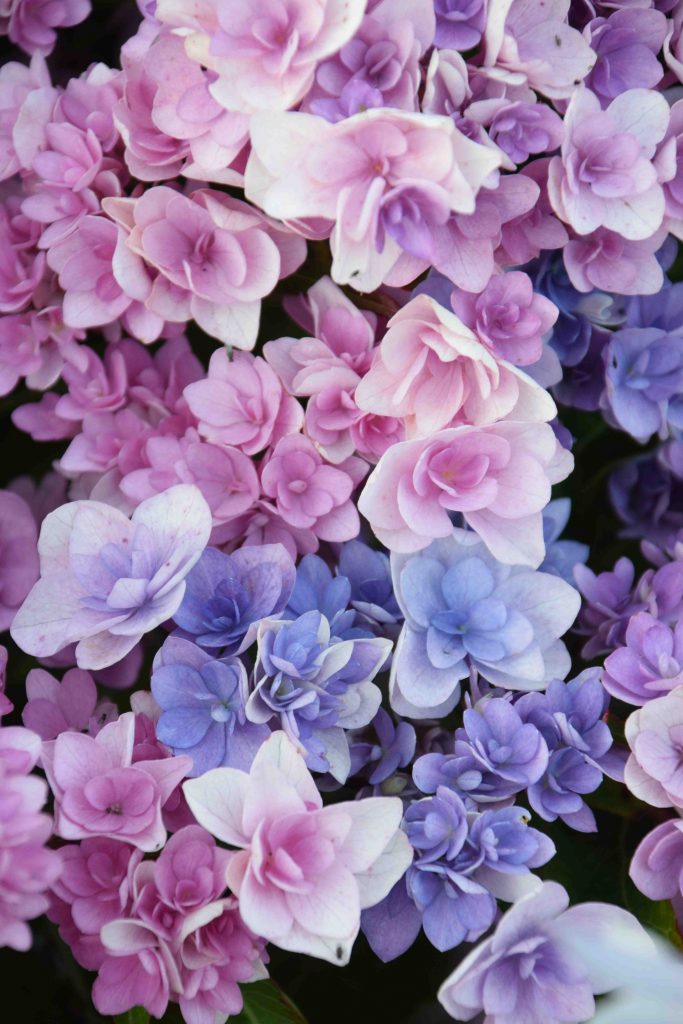
I think that, via various means, I get more questions on hydrangeas than any other plants, closely followed by camellias and clematis. A contributory factor is undoubtedly their popularity but there are also lots of things to understand about hydrangeas. When I built and manned a display at Bloom in the Park (Ireland’s Chelsea) a few years ago, and was selling hydrangeas, I was sorely tempted to get a ‘T’ shirt printed with ‘Acid soil = blue, Alkaine soil – pink’.
Firstly, lets talk about Hydrangea marcophylla, the most common hydrangeas, often called mophead hydrangeas, and called bigleaf hydrangeas in the USA – a direct translation of macrophylla. These have two flower types, the big mopheads, with flower clusters made of large, showy, sterile flowers and the lacecaps, with a ring of sterile flowers and a central area of small, fertile flowers. To confuse things there are now double too with sterile flowers with lots of ‘petals’ rather than four (see pic above).
These are all wonderful plants for the August garden, covered in colourful flowers. Varieties used to be limited and in my days at Nags Hall the only ‘outdoor’ hydrangea we sold was ‘Europa’ though other, older kinds were available. ‘Europa’ was popular because it was compact while the older kinds, though lovely, tended to be big shrubs, 1.5m or more high and wide. And, as many people discover, keeping a large hydrangea small has its problems.
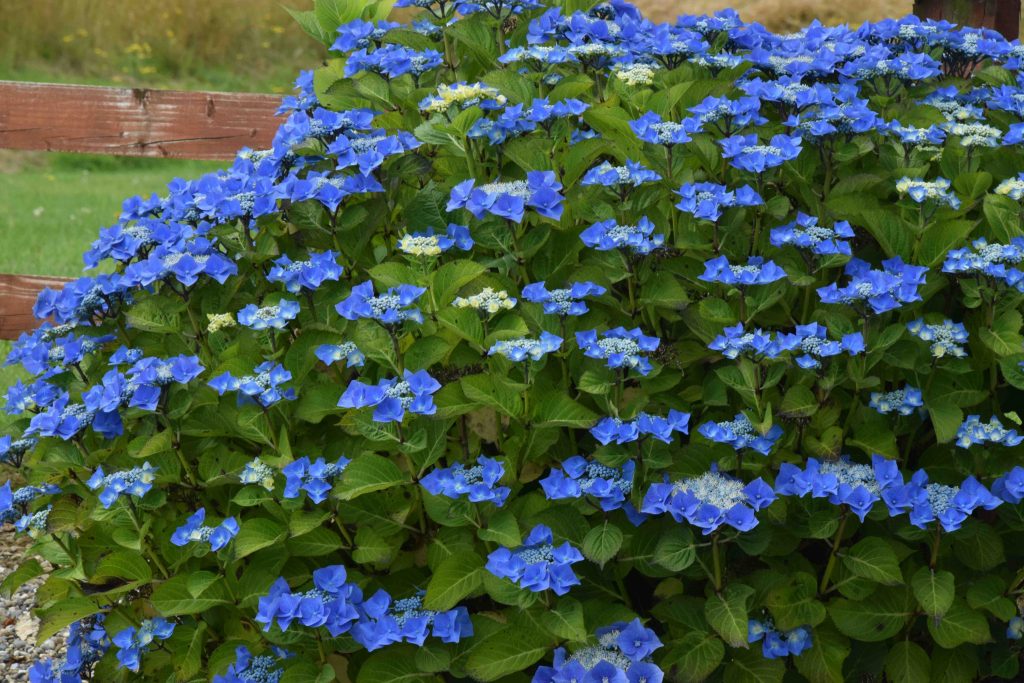
But back to flower colour. The intensity of the pigments varies so pale pinks will never be vibrant blue and whites will not turn red or blue but the ‘red’ pigment will change according to the minerals in the soil. A hydrangea needs to absorb Aluminium from the soil to create blue pigment. If it does not the pigments will be red. Aluminium is not available in the soil, for the plant to absorb, if the soil is alkaline. In acid soils it is readily available, along with iron and magnesium. It is common to throw old iron into the soil to make hydrangeas blue but this actually acidifies the soil around the plant. A more convenient way to ‘blue’ hydrangeas is to use Hydrangea Colourant. This is Aluminium sulphate and is dissolved in water and applied to the plants. It must be applied as soon as the flowers buds start to form. If given once the flowers start to open, only the later flowers will be blued – as you can see in the top photo. It is commonly written that this ‘in-between’ colouring is undesirable but I quite like it!
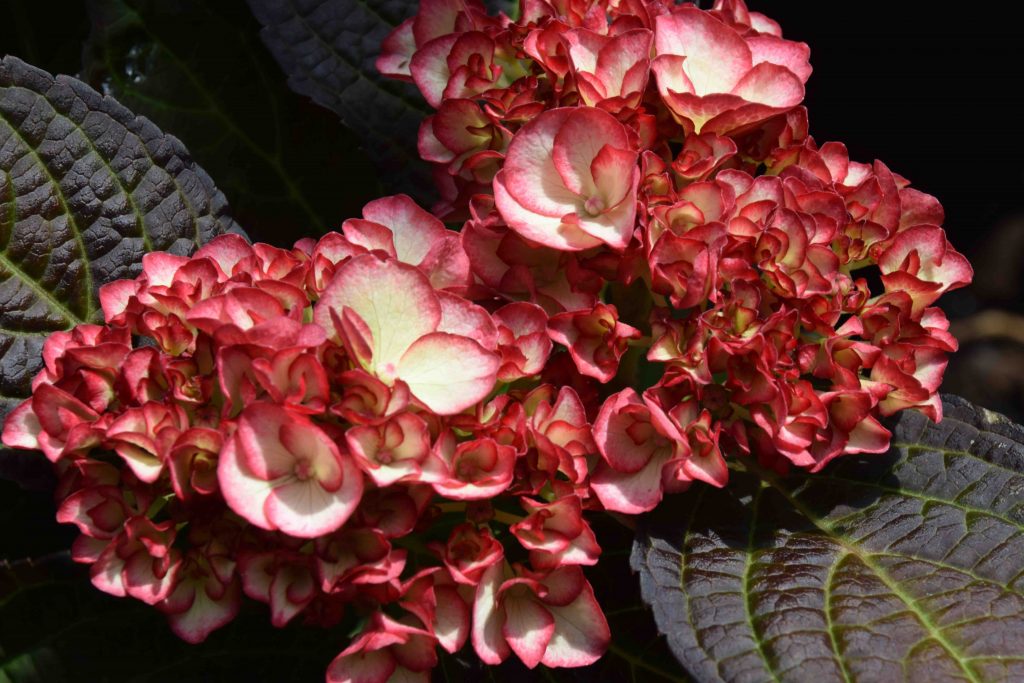
These hydrangeas are not 100% hardy and thrive best in mild, sheltered areas. They are popular for pots where you can amend the compost to get the colour you want. When growing in pots use John Innes No 3 compost for pink flowers and lime-free John Innes for blue flowers.
It is not time to prune but I can’t avoid mentioning it because it leads to so many problems. Hydrangeas do not bloom on the main stems that grow this year. They bloom on small shoots that grow on last year’s stems. In March, tip back the new, long shoots to a pair of fat buds and thin out a few of the very oldest stems, back to the base. If you have a plant that is huge and you cut it all back to reduce its size it will respond with masses of healthy growth but will not flower.
This is not strictly true though and in mild, coastal areas these new shoots will produce flowers in late autumn, but in most gardens the first frost of autumn comes too early and prevents this.
Things are confused further by the latest varieties which have been bred specially to bloom on new shoots. ‘Endless Summer’ was the first of these. One of the most famous of recently introduced shrubs, ‘Runaway Bride’ is a white, lacecap that blooms on new shoots.
Hydrangeas are useful shrubs for part shade though they thrive in full sun if the soil is not dry. White hydrangeas often turn pink unless they are grown in part shade. They like water but no more than other shrubs and although their name is often said to reveal their love of water the ‘hydra’ bit of it actually refers to the Greek for an urn, the name referring to the shape of the seed pods and not their thirst!
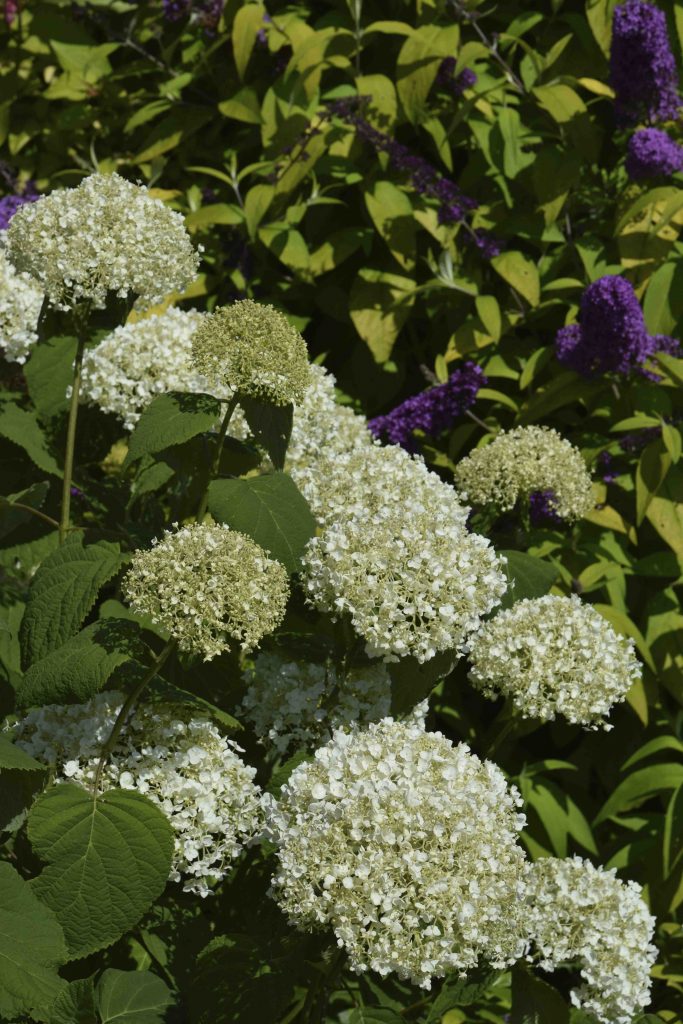
But these are not the only hydrangeas. There are climbing hydrangeas and a wealth of other shrubs. Among these, the most popular are H. arborescens, usually seen as ‘Annabelle’ and H. paniculata. Both these are more tolerant of dry, sunny conditions and are hard pruned in spring. Their flower clusters are bigger if you prune them hard. Most have flowers that start lime green, pass through creamy white and mature to shades of pink, depending on the variety. Their big advantage is that they are very hardy and tolerate frosty winters. The disadvantage is that none are blue and you can’t turn them blue.
Jobs for the week
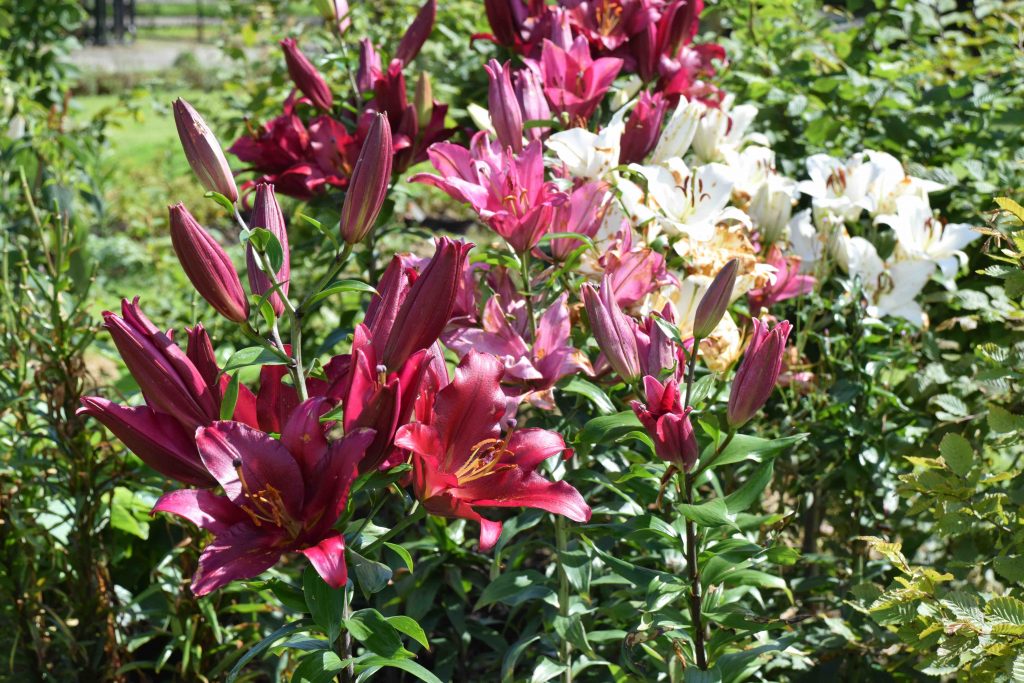
If you have been enjoying lilies in the garden, still be vigilant for bright red lily beetles. My tree lilies (above) have been scenting the garden for weeks. As the last buds open I often cut some for the house. I remove the old flowers and allow the last buds to decorate the house. When cutting lilies, as long as you leave half the length of stem on the plant it will not damage the bulbs. Lilies are hardy and do not need to be lifted in autumn.
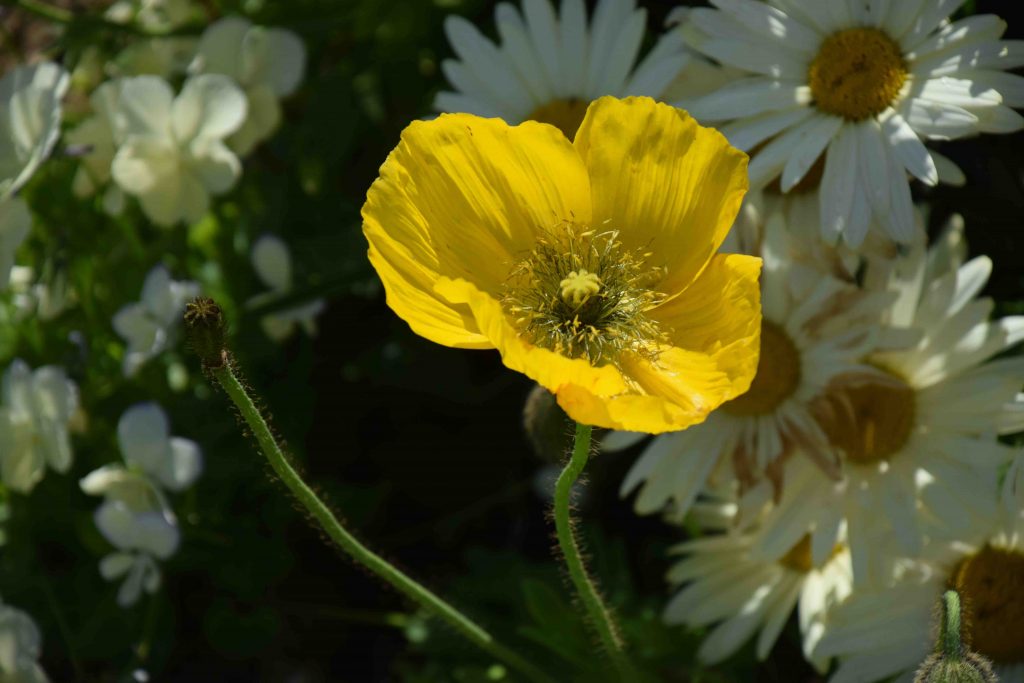
There is still time to sow some biennials and perennials for colour next year. Lupins, delphiniums, achillea, foxgloves and Iceland poppies are all easy to grow, will germinate quickly now and the young seedlings can be planted out in autumn or kept in a coldframe over winter to plant out in spring.
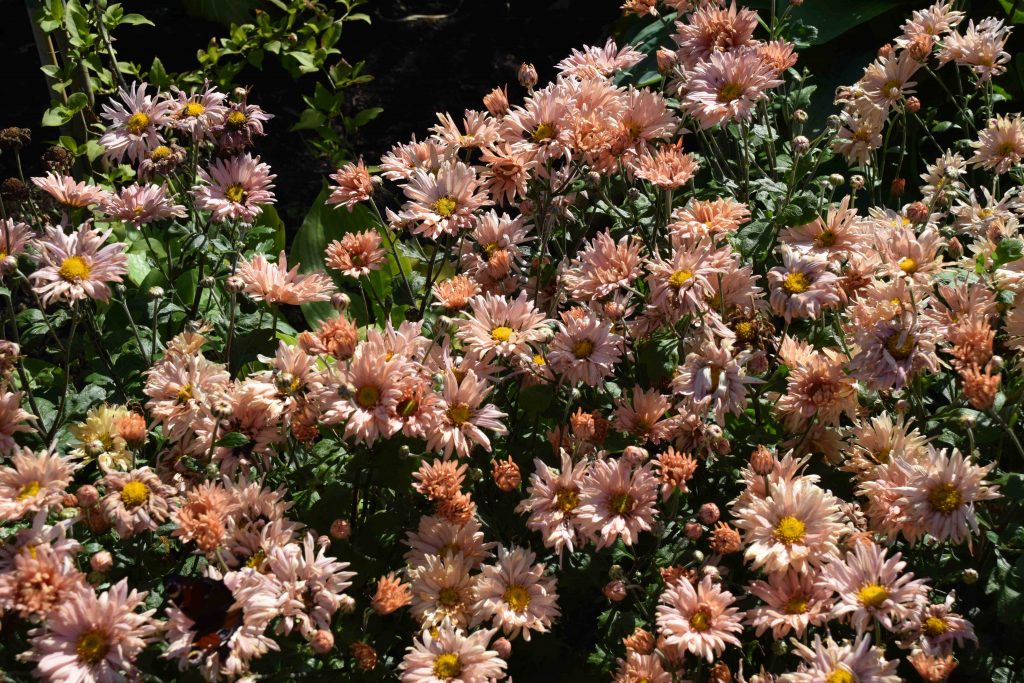
If you have gaps in the border, buy some chrysanthemums to fill them. They will bloom for months and most are hardy so can be kept for another year.